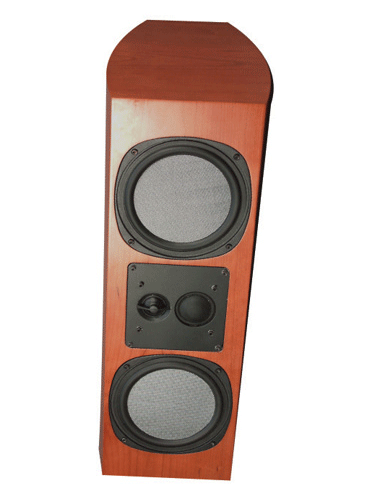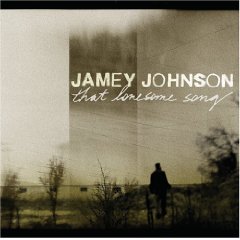Phase Technology PC-3.5 Loudspeakers
| Phase Technology PC-3.5 Loudspeakers |
| Listening in Absolute Phase |
|
|
|
November 2009 |

In Good Company
My first experience with Phase Technology was at my local high audio boutique in back Buffalo, NY, around 15 years ago, a time when my audio journey had begun. Phase Tech had just come out with the 3.1 model which used two Rigid Polymer Foam woofers, a predecessor of the current speaker system under review. Impressed with their audio sound scape then, the 3.1s were at the top of my list but my budget didn’t allow for a purchase of five matched 3.1s to complete a home theatre. Having recently visited one of the local hi-end brick and mortar stores, I noticed the Premier Collection (PC) PC-3.5 in the main demo room which had looked familiar. Immediately following my first audition I had to hear the PC-3.5 in my system so immediately contacted the company and requested a review sample with that being the basis of the evaluation.
Phase Technology, a subsidiary of United Speaker Systems®, has been in the loudspeaker business for over 50 years. Phase Technology is one of the few loudspeaker companies that are fully integrated, building almost all speaker components in house including the drivers, crossovers, and cabinets. To maintain the highest quality standards in the manufacturing process, each speaker system undergoes twelve quality control and stringent frequency response tests prior to shipment. Phase Tech is also a leader in speaker technology with the following speaker design patents to their credit:
• Soft dome tweeter
• Flat piston woofer
• Self-damping woofer voice coil
• Manufacturing process for solid, flat piston drivers
• Silicone-injected drivers for resonance damping
• Basket-less woofer/midrange driver mounting system
• Speaker frame housing and clamp assembly for wall or ceiling mounts and method
• Wall mounted speaker enclosure
The PC-3.5 is one of six speakers within the Premier Collection line. Consisting of two 6.5” flat piston woofers, soft dome midrange, soft dome tweeter, and rear port, the PC-3.5 operates as a three way speaker with the woofers/midrange crossed over at 800 Hz and the midrange/tweeter crossed over at 3k Hz. Midrange and tweeter are mounted on their own separate baffle allowing either vertical or horizontal placement with just the loosening four Allen head screws and rotating the baffle assembly. The most unique design features of the PC-3.5 include the absolute phase-crossover and solid piston driver which both work together to enhance performance. The absolute phase-crossover design ensures that the integration of two mating drivers and crossover filter are acoustically and electronically phase coherent. Wow … I thought I was phase coherent. The other proprietary design feature is the solid piston flat drivers made from Rigid Polymer Foam® (RPF®). Being less than half the mass of a conventional conical-shaped diaphragm, the RPF driver is acoustically opaque in that internal reflections within the speaker enclosure are not transmitted to front cone wave and non-resonant throughout the driver’s operating frequency range. The flat surface RPF driver is said to allow the sound waves to begin at the same surface as the midrange and tweeter resulting in the best time alignment. The parts quality of the crossover is also notable: consisting of air-core inductors and electrolytic capacitors with multiple size bypass caps. Validation of these design features in my reviewing system will be coming shortly.
Removing the speakers from their boxes was difficult. The speakers were well packed with the foam fitting extremely tight in the box. I thought to myself if the speakers are made to such a tight tolerance as the fit of the foam to the box then we might have a really high quality speaker here. After removing the PC-3.5 from their well packaged boxes, I found the gloss black fit and finish of the PC-3.5 to be top notch and not consistent with competing speakers in this priced range. The wife loved them.
System Set-up
My reviewing system includes the Nova Physics Memory Player transport, Pioneer bdp-09fd blu ray player, TacT Audio 2.2x Room Correction preamp with Mauimods full enchilada modification, Spectron Musician IIIMk2 amplifier, Escalante Design Pinyons monitors with the Escalante Design Uinta subwoofer (replete with the matching Escalante Design Hoodoo stands ¾ filled with Star Sound Micro-Bearing conductive Steel Fill) Cables are all Omega Mikro Macasser Ebony Digital Active between the Noa Physics MP and TacT 2.2x, Omega Mikro Planar Analog Planar between the Tact 2.2x and Spectron Musician IIIMk2, Omega Mikro Planar Analog VI between the TacT 2.2x and Uinta subwoofer, and Omega Mikro Planar Active power cables powering all components. For the review, the TacT 2.2x preamp was run in the 2.0 mode and the Uinta subwoofer was disconnected from the system allowing the PC-3.5 and the Escalante Design Pinyons to run full range. I have one of the more challenging rooms typical of a family room with a couch, love seat and coffee table area rug centered on a hard wood floor. My listening area is 14.5’ wide, has a 9’ ceiling, and an open back wall to 1500 sq ft of living area.
For the review, I used the 24” tall Escalante Design Hoodoo stands to compare my reference stand mounted loudspeaker to the stand mounted Phase Tech PC-3.5s. I removed the front speaker grille on both speakers to yield the most coherent sound. After some experimentation, I found that the PC-3.5 sounded their best in the same location that the Pinyon resided. PC-3.5s required at least 100 hour break-in period to sound their best.
Results
 Let me start by saying this is the most difficult review I have completed so far; the PC- 3.5s unexpectedly bested my reference in some important performance areas. I was impressed at first by the speaker’s ability to image within the tight sound space of my family room. On the 3rd cut of Norah Jones’ Come Away with Me CD entitled Cold Cold Heart (Blue Note Records), the size and image of the piano was accurately portrayed within the soundstage. In comparison to other book shelve speakers which tend to soften the image by comparison, the PC-3.5 offered razor sharp imaging. For most recordings on this album, it was easy to outline the acoustic space in which the recording session was conducted.
Let me start by saying this is the most difficult review I have completed so far; the PC- 3.5s unexpectedly bested my reference in some important performance areas. I was impressed at first by the speaker’s ability to image within the tight sound space of my family room. On the 3rd cut of Norah Jones’ Come Away with Me CD entitled Cold Cold Heart (Blue Note Records), the size and image of the piano was accurately portrayed within the soundstage. In comparison to other book shelve speakers which tend to soften the image by comparison, the PC-3.5 offered razor sharp imaging. For most recordings on this album, it was easy to outline the acoustic space in which the recording session was conducted.
 Listening to the opening track,That Lonesome Song by Jamie Johnson (Mercury Nashville), the sound of the bell extended well past the back wall of my listening area and with never ending decay. Soundstaging of the PC-3 as compared to my reference was more behind and to the sides. However, my reference speaker system which listed over three times the cost (back in 2004), disappeared better and more accurately located Jamie Johnson’s voice in the vertical plane. In short, they performed more like a single point source. Comparing what I heard in my listening room to that of my local hi-end shop which was nearly twice as wide, the PC-3.5 don’t sound quite as good as my reference but they most certainly image and soundstage better in a larger room.
Listening to the opening track,That Lonesome Song by Jamie Johnson (Mercury Nashville), the sound of the bell extended well past the back wall of my listening area and with never ending decay. Soundstaging of the PC-3 as compared to my reference was more behind and to the sides. However, my reference speaker system which listed over three times the cost (back in 2004), disappeared better and more accurately located Jamie Johnson’s voice in the vertical plane. In short, they performed more like a single point source. Comparing what I heard in my listening room to that of my local hi-end shop which was nearly twice as wide, the PC-3.5 don’t sound quite as good as my reference but they most certainly image and soundstage better in a larger room.
I was also impressed with the lower midrange performance of the PC-3.5; in particular the frequency range of male vocals and the lower frequencies of woodwinds and brass. Having a son in high school band and comparing the sound of his saxophone to the PC-3.5 playing woodwind instruments allowed me to appreciate the clarity, tone, and sense of bloom in this spectrum on the PC-3.5. Compared to my reference, I found the clarity of the treble and upper midrange to be more resolving and having greater frequency extension but less forgiving of bright recordings. There was also considerable content in the low end (below 100Hz) exhibited on the PC-3.5 at the start of cut 4 on Jack Johnson, In Between Dreams (Universal Records) which was much more than one would expect from a monitor of its size. In terms of shear lower bass output the PC-3.5 bested my reference hands down. True musical bass definition was notable, though not quite to the extent I have experienced from my Talon Khorus X MKII (12” woofer x 2) I owned a few years ago.
I did compare both speakers while viewing the movie, The Curious Case of Benjamin Button (Warner Brothers Pictures) using my Pioneer bdp-09fd blu-ray player as the source. The clarity and spatial character of the midrange was shown in spades making the PC-3.5 my first choice for home theatre. The voice of Benjamin Button as played Brad Pitt had a lifelike presence which was more believable and captivating on the PC-3.5.
Bottom Line
In my discussion with Ken Hecht, the Premier Collection line is aimed at the audiophile who wants the “biggest bang for the buck” where every once of performance is squeezed out of the design for a reasonable price. The Phase Technology PC-3.5 delivered on this promise, no question.
If you’re looking for a speaker system up to $4000, I would have the PC-3.5 on your short list for audition. In some ways, it out performed my reference and certainly compares with speaker systems costing two to three times more.
![]()

Specifications:
Tweeter: 1” soft dome, variable axis
Midrange: 1.5” soft dome midrange
Woofer: Two 6.5” RPF flat-pistons, midbass
Frequency Response: 36 Hz-22 kHz
Crossover Frequencies: 800 Hz (24 dB/Octave) and 3.5 kHz (24 dB/Octave)
Nominal Impedance: 4 Ohms
Recommended Amplifier Power: 20 – 250 Watts
Inputs: bi-wireable
Sensivity: 91 dB
Cabinet Design: Bass Reflex
Finishes: Black gloss, Natural cherry
Dimensions: 22” (L) x 7 7/8” (W) x 12 5/16” (D)
Weight (In Pounds): 38 lbs each
Warranty: 10 year transferable
Price: $1,000 each
Address:
Website: www.Phasetech.com
Phase Technology
6400 Youngerman Circle
Jacksonville, FL 32244
sales@phasetech.com
Phone: (888) 742-7385
![]()
Don’t forget to bookmark us! (CTRL-SHFT-D)
Stereo Times Masthead
Publisher/Founder
Clement Perry
Editor
Dave Thomas
Senior Editors
Frank Alles, Mike Girardi, Key Kim, Russell Lichter, Terry London, Moreno Mitchell, Paul Szabady, Bill Wells, Mike Wright, Stephen Yan, and Rob Dockery
Current Contributors
David Abramson, Tim Barrall, Dave Allison, Ron Cook, Lewis Dardick, Dan Secula, Don Shaulis, Greg Simmons, Eric Teh, Greg Voth, Richard Willie, Ed Van Winkle, and Rob Dockery
Music Reviewers:
Carlos Sanchez, John Jonczyk, John Sprung and Russell Lichter
Site Management Clement Perry
Ad Designer: Martin Perry




Be the first to comment on: Phase Technology PC-3.5 Loudspeakers